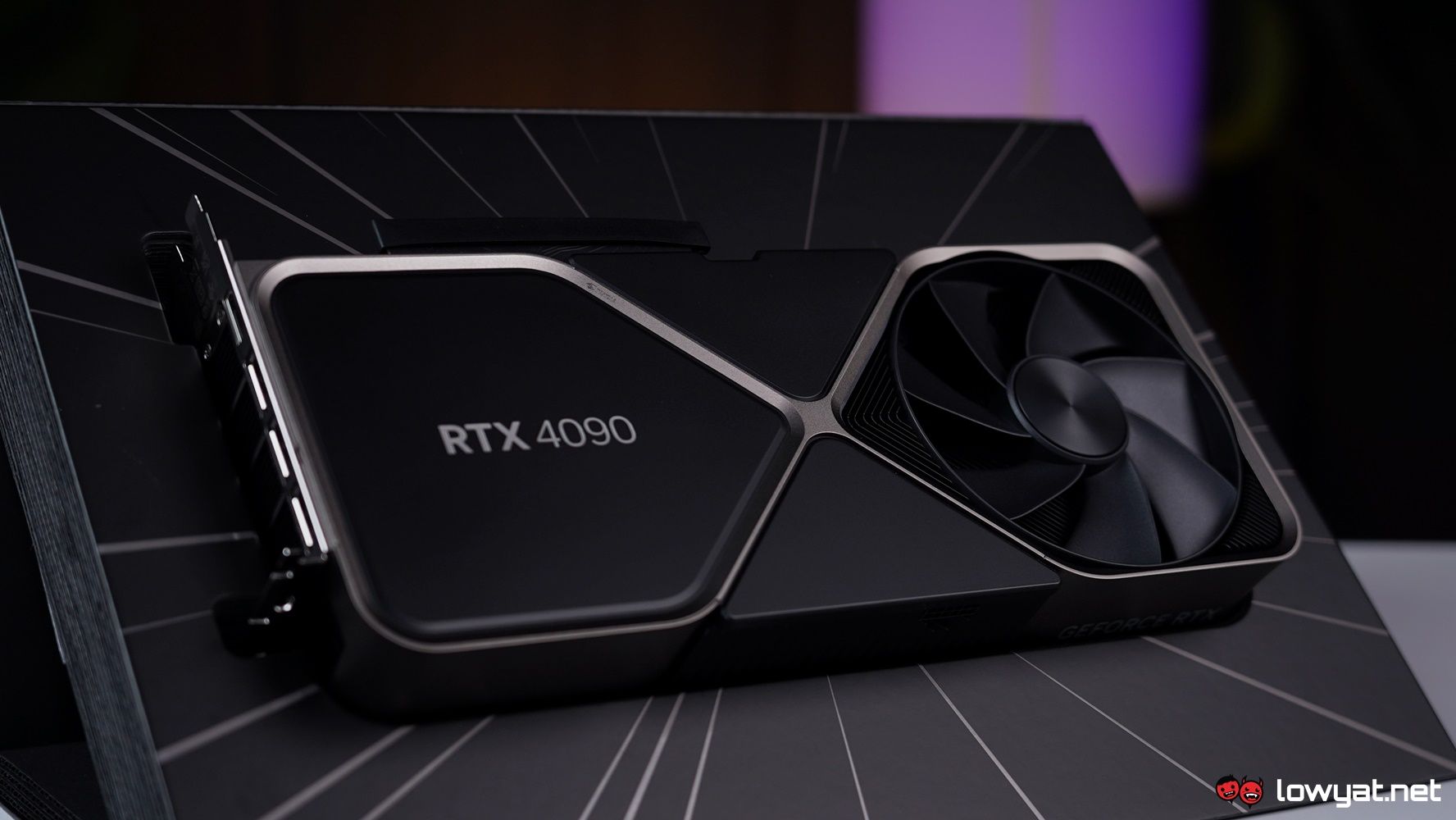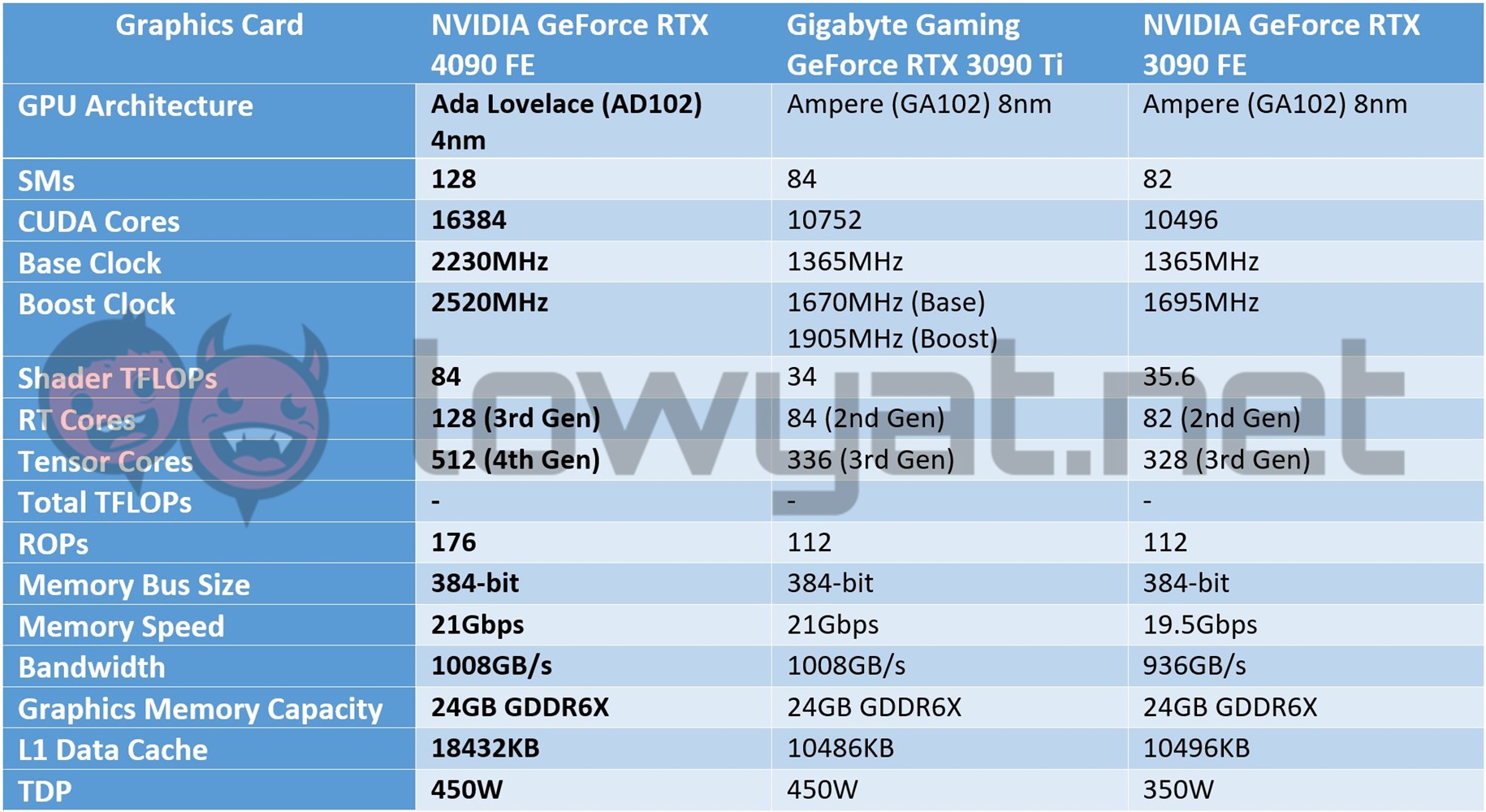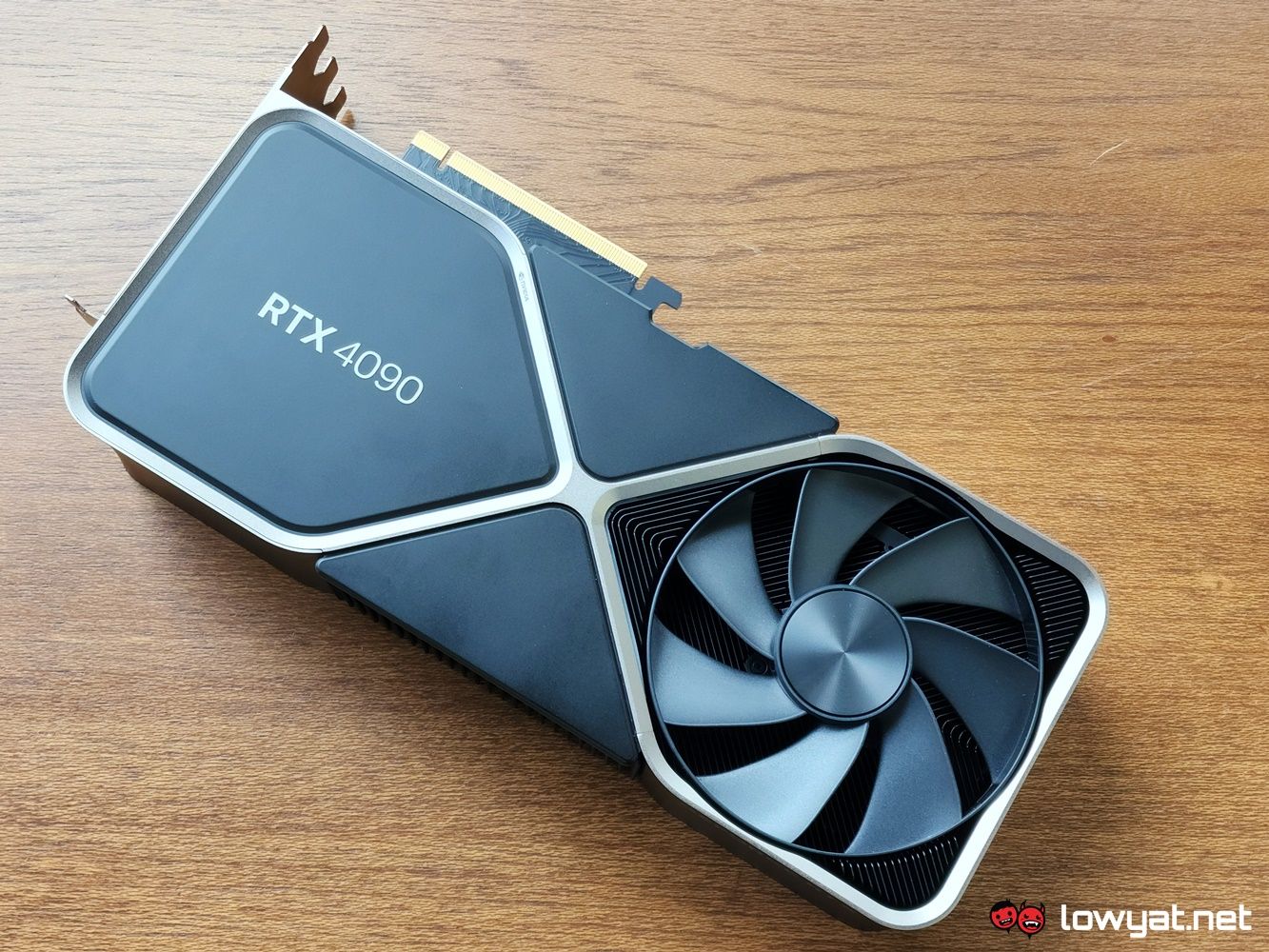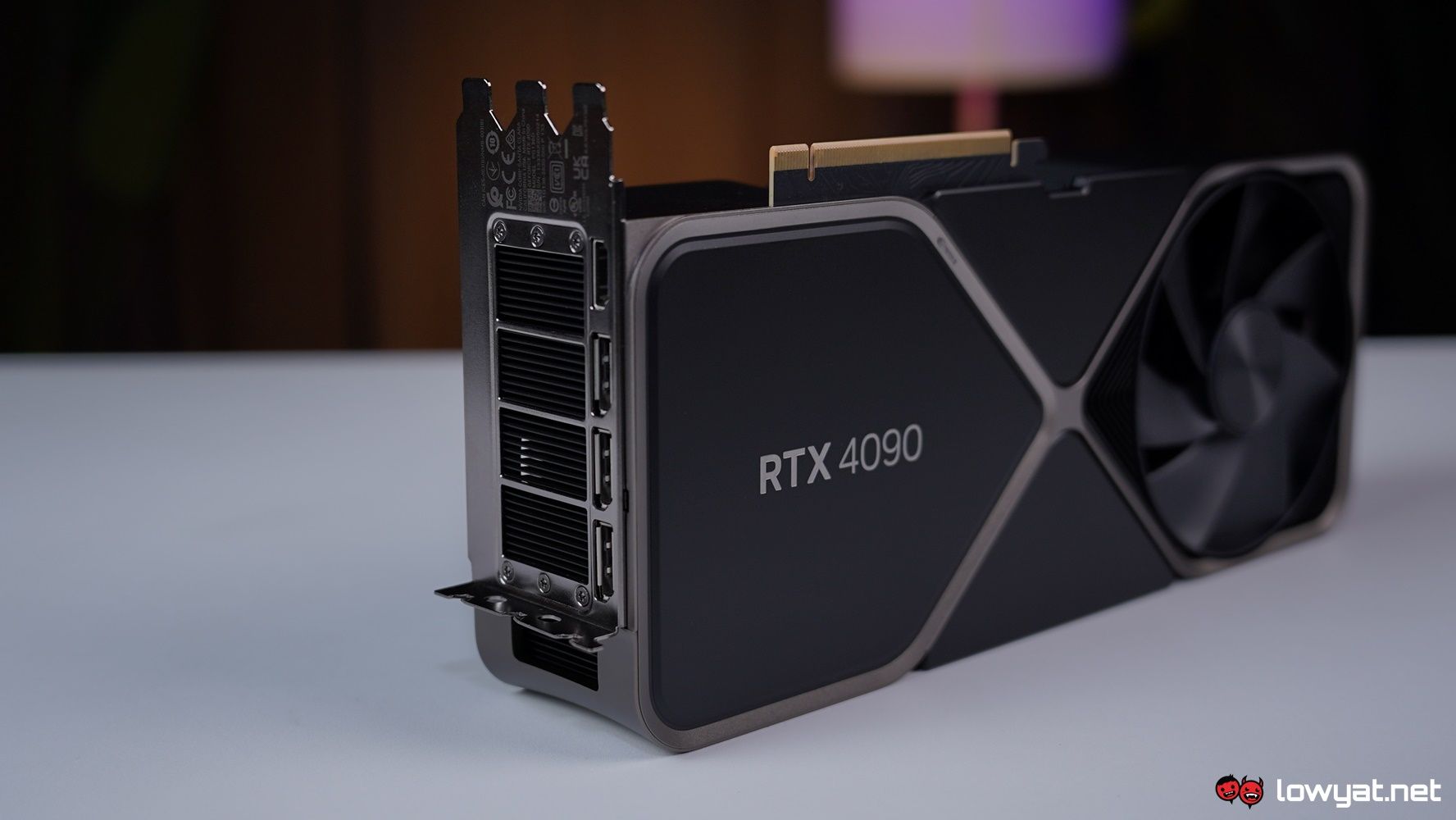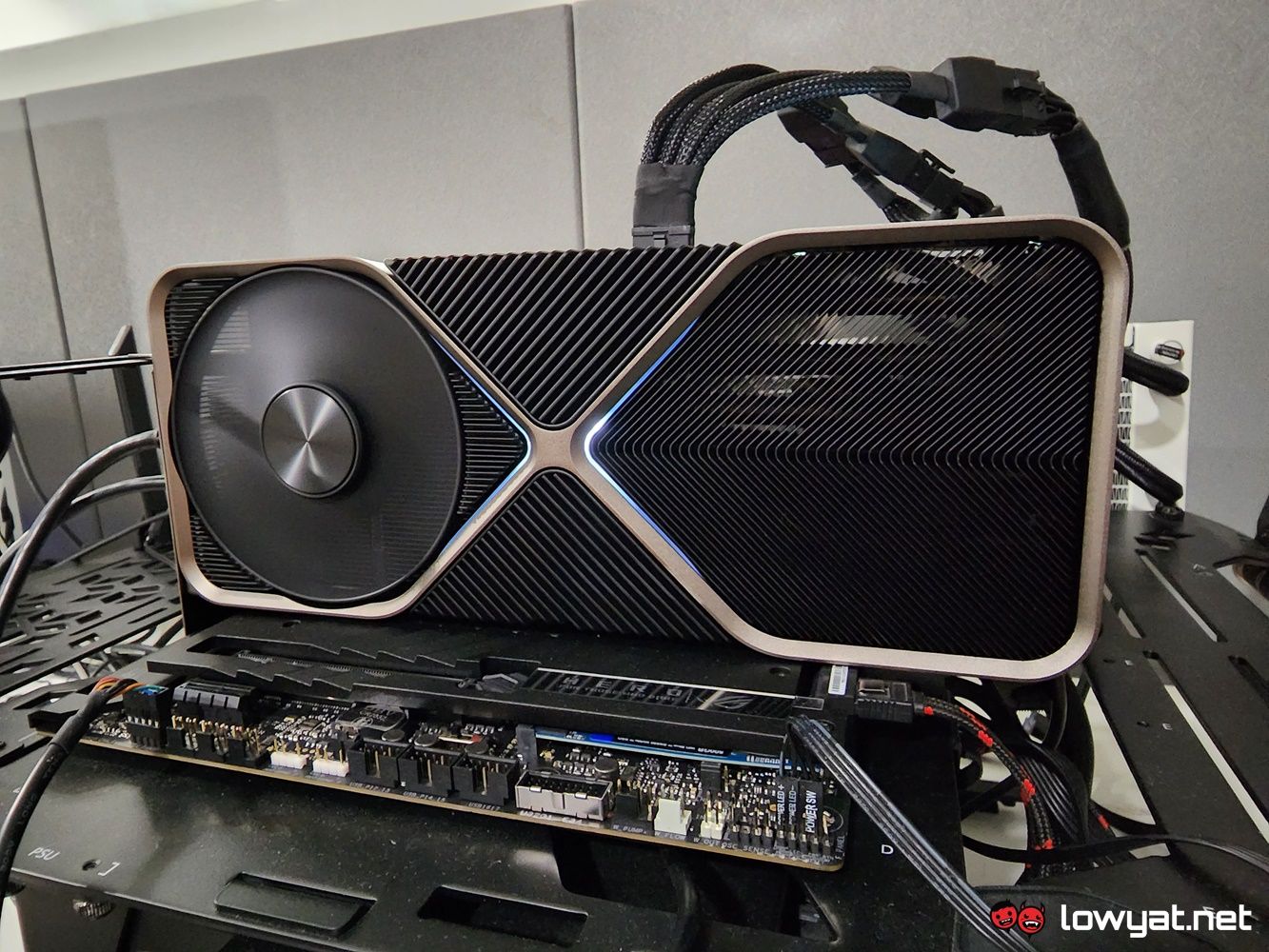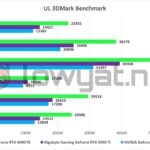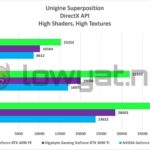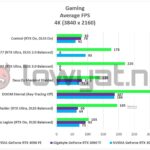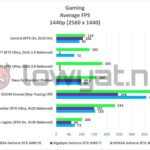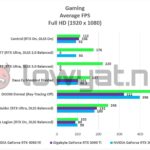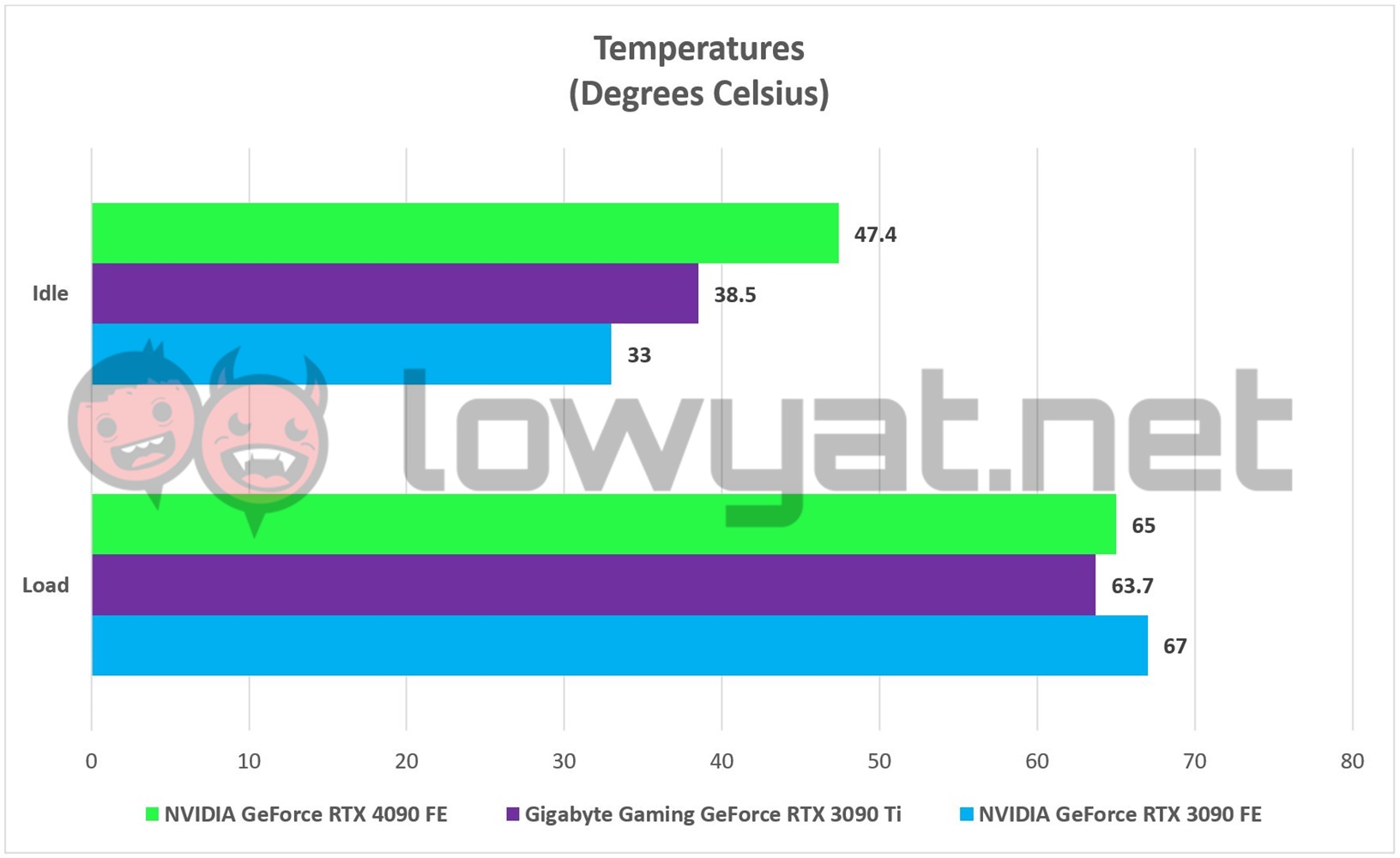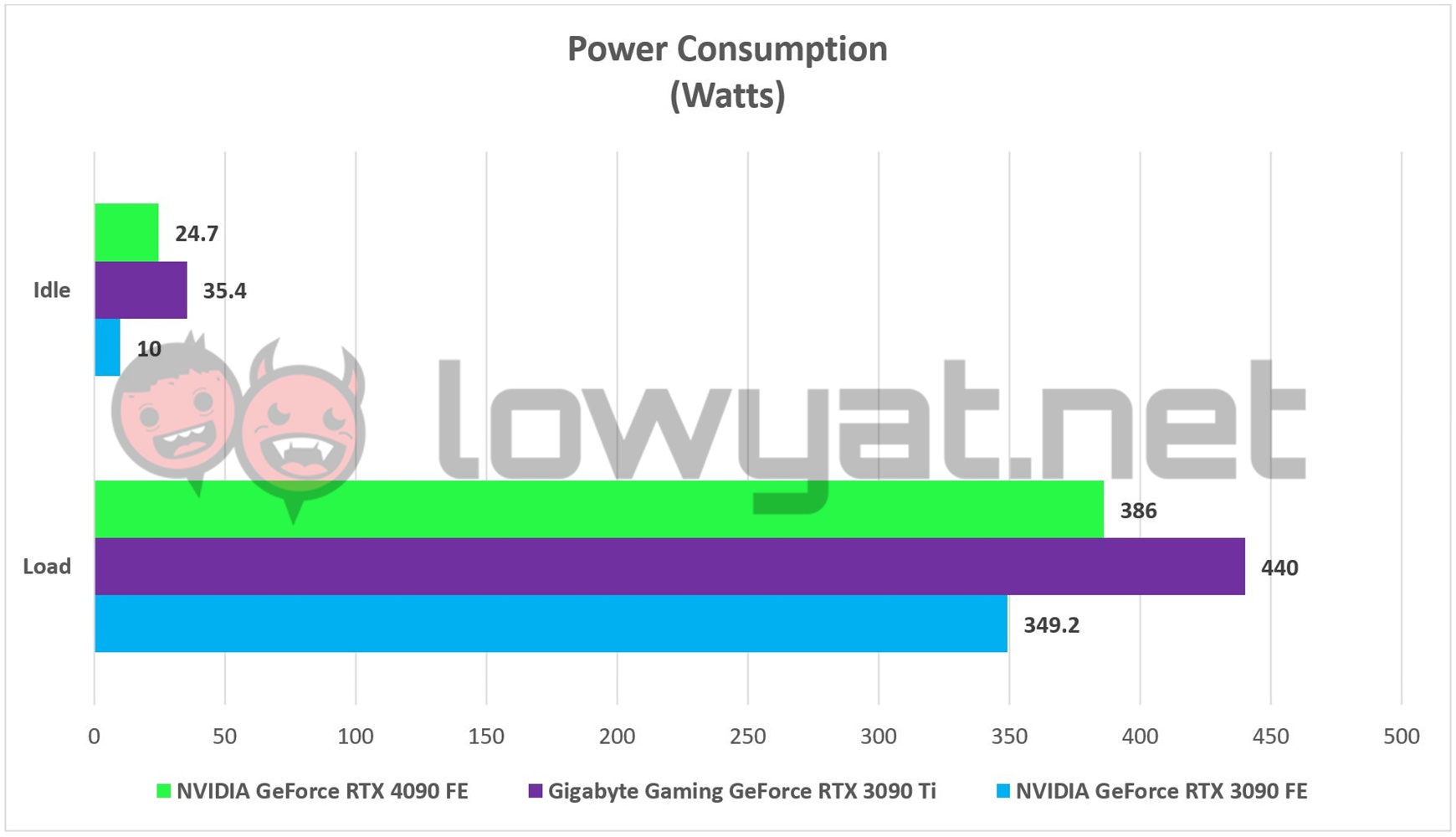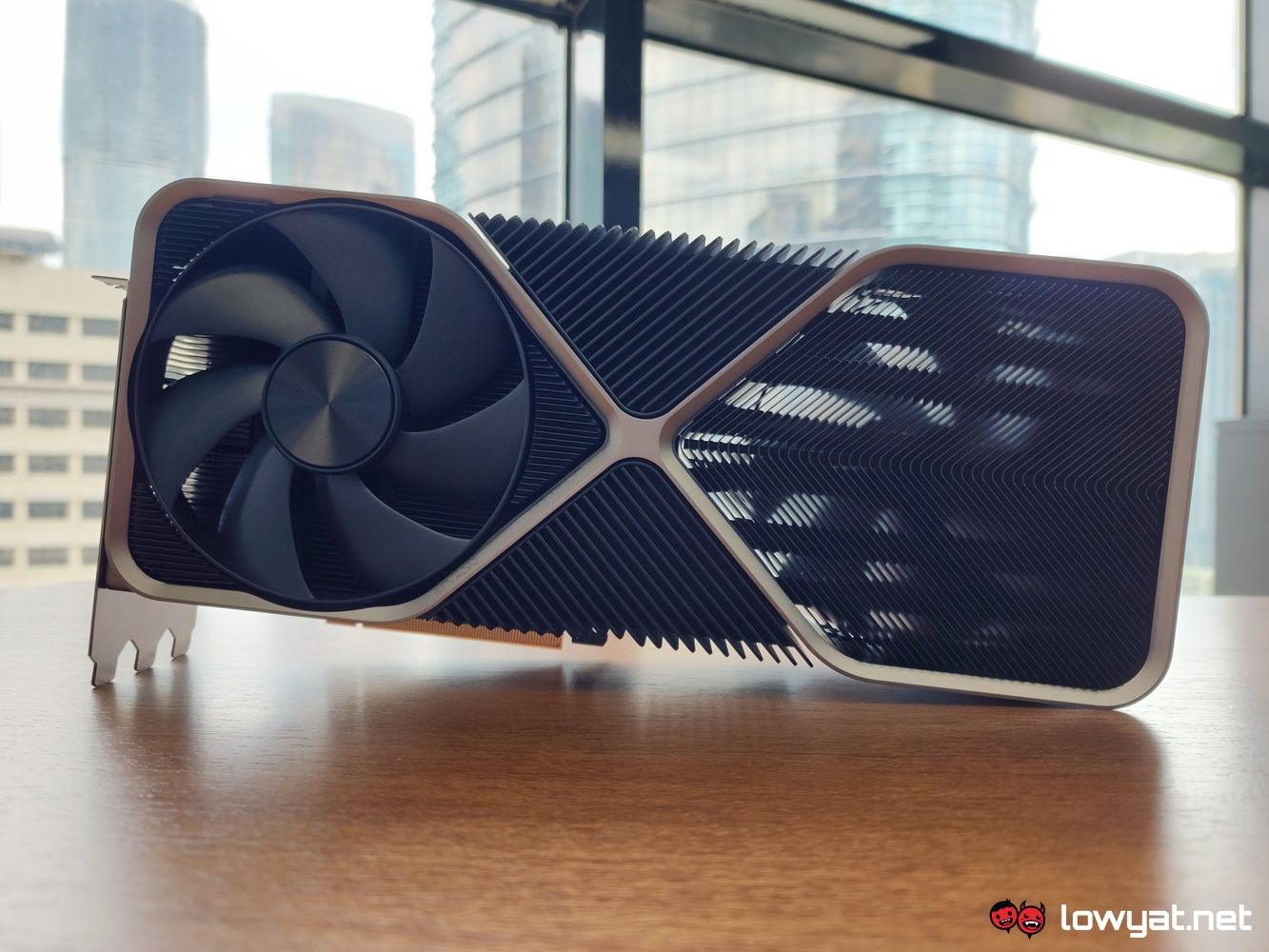Back at the end of September, NVIDIA pulled the veil back from the GeForce RTX 4090, the card that now wears the crown and robes of the flagship GPU. Built up from Ada Lovelace, its parent brand’s most powerful consumer GPU architecture to date, NVIDIA is touting the card as being up to four times more powerful than its predecessor.
Now that we have the Founders Edition (FE) of the RTX 4090 in the lab, and with the NDA finally lifted, we can finally talk a little more at length and in-depth about the card and whether or not it really is as powerful as NVIDIA says it is.
Specifications
Like all generational updates and follow-ups, the RTX 4090 FE can boast an all-new GPU that is significantly more powerful but less vocal about it. More on the last bit later.
To add on a bit more on Lovelace, the new architecture used in the RTX 4090 is a derivative of Hopper, NVIDIA’s High Performance Computing (HPC) GPU that is designed primarily for AI and supercomputer applications, to say the least. Specifically, the GPU being used in the brand’s latest flagship graphics card is the AD102. There is also the AD103 and AD104, but to keep things simple, they are all based off the same 4nm die lithography. Again, more on this a little later.
Design
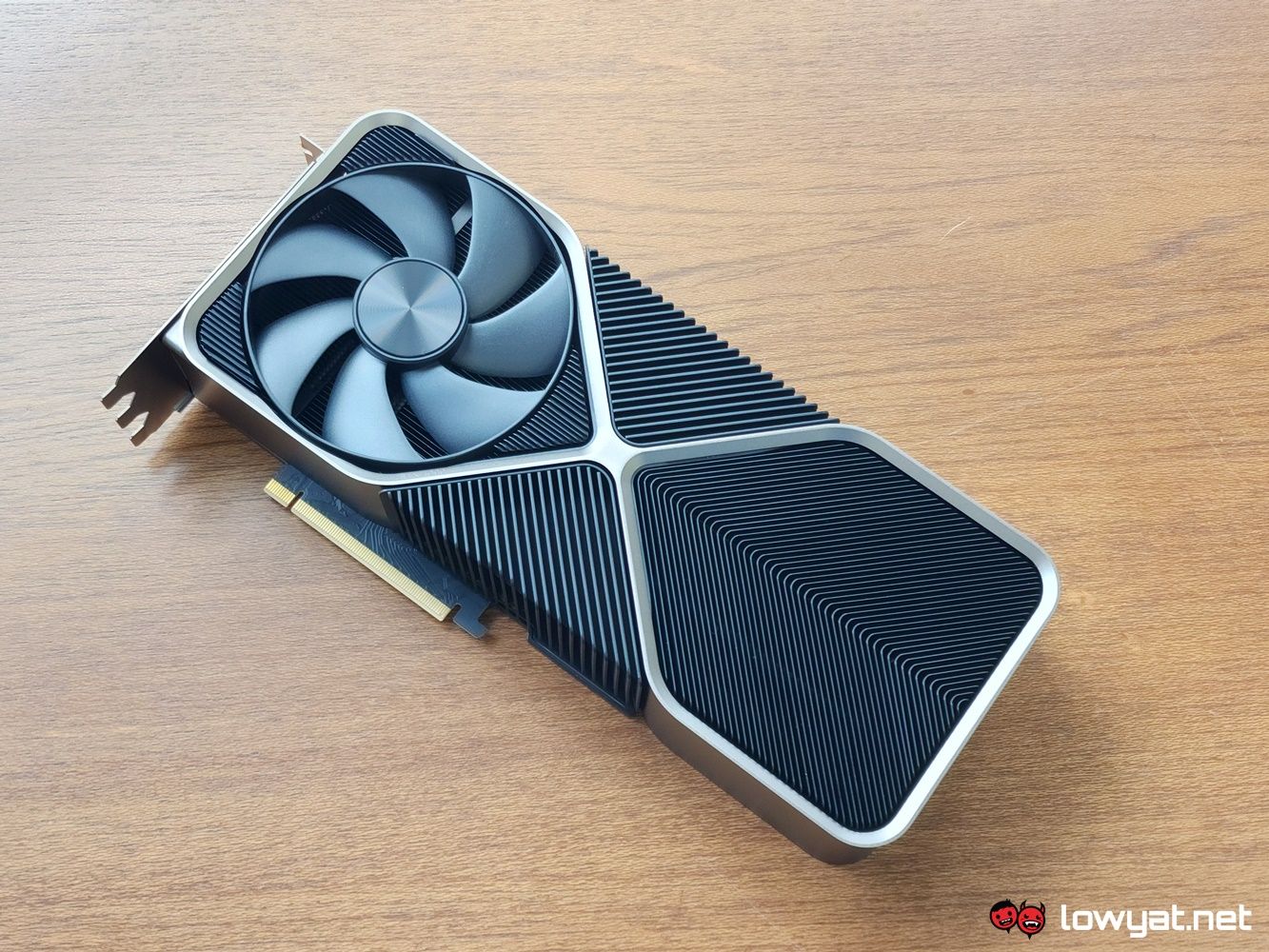
 It is becoming increasingly clear that brands in general have entered in to a “If it ain’t broke, don’t fix it” phase of sorts, and NVIDIA is prominently displaying that attitude through its RTX 4090 FE. At a glance, the whole card looks like a carbon copy of the RTX 30 Series Founders Edition models.
It is becoming increasingly clear that brands in general have entered in to a “If it ain’t broke, don’t fix it” phase of sorts, and NVIDIA is prominently displaying that attitude through its RTX 4090 FE. At a glance, the whole card looks like a carbon copy of the RTX 30 Series Founders Edition models.
Dual Axis Flow Through makes a return, with some improvements.
From its angular, rigid design and the V-themed fins that are visible at the front of the card, the RTX 4090 FE also boasts the same unique Dual Axial Flow Through aesthetic that has one fan pulling up air from behind the heatsinks, while the other maintains static pressure and consistent cooling on the GPU and PCB itself.
Get in a little closer though, and you can actually see that NVIDIA did make some small adjustments, tweaks, and changes to the RTX 4090 FE. The most glaring change of them is physical: To use the street parlance, this card is a absolutely chonker. No, really, its girth is actually thicker than our RTX 3090 FE.
I suspect that the reason NVIDIA increased the overall size of the RTX 4090 FE is due to the brand having learned its lesson from the launch of its last-generation flagship, the RTX 3090 Ti. Looking back at it, the card was basically a way for the GPU maker to test drive certain features, and one of the major issues that it found with the card – technically speaking, it was mainly an issue with the FE variant of the card than it was with its AIB partners’ own iterations of it – was the intense heat it was generating.
Simply put, the performance increased, but it was reusing the same shroud as the RTX 3090, and it barely kept the heat at bay.
Better fans and a new font to celebrate the card.
Getting back to the RTX 4090 FE, the fans have also been improved with a new axial design; the fan blades are fewer than its predecessor but are bigger. NVIDIA says that this allows them to generate higher static pressure, in comparison to those on the RTX 30 Series cards.
Of course, it is not possible to write this review without addressing yet another elephant in the room: NVIDIA’s choice of font for the new series. Honestly though, I’m not as shocked or as surprised by it; credit where it’s due, the brand had been using that same blocky, no-nonsense design since time immemorial. With the RTX 4090 FE, it makes it look less aggressive.
Looks aside, it is in this portion of the review that I wish to take the time to speak about the core of the RTX 4090 FE, the Lovelace GPU, along with the other accoutrement that are part and parcel with it.
NVIDIA’s latest feat: shrinking the GPU die from 8nm to 4nm.
At the time, NVIDIA’s 8nm Ampere architecture wooed and amazed many of us. Fast forward to today and it has now managed to halve – halve – the size of the new GPU die to 4nm. With the new process, the company also managed to improve upon its performance-per-watt and it shows in the benchmarks, which you can view in the benchmarks section.
It’s not just the RTX 4090’s GPU that has received a generational update either. The Ray-Tracing (RT) Cores are now in their 3rd generation, while the Tensor cores are now in their 4th generation, both of which are obviously massive contributors towards the card’s ability – AI-wise, at least – to churn out ray-traced graphics. While ensuring in-game frames remain high, that I’m guaranteed a very comfortable gaming experience.
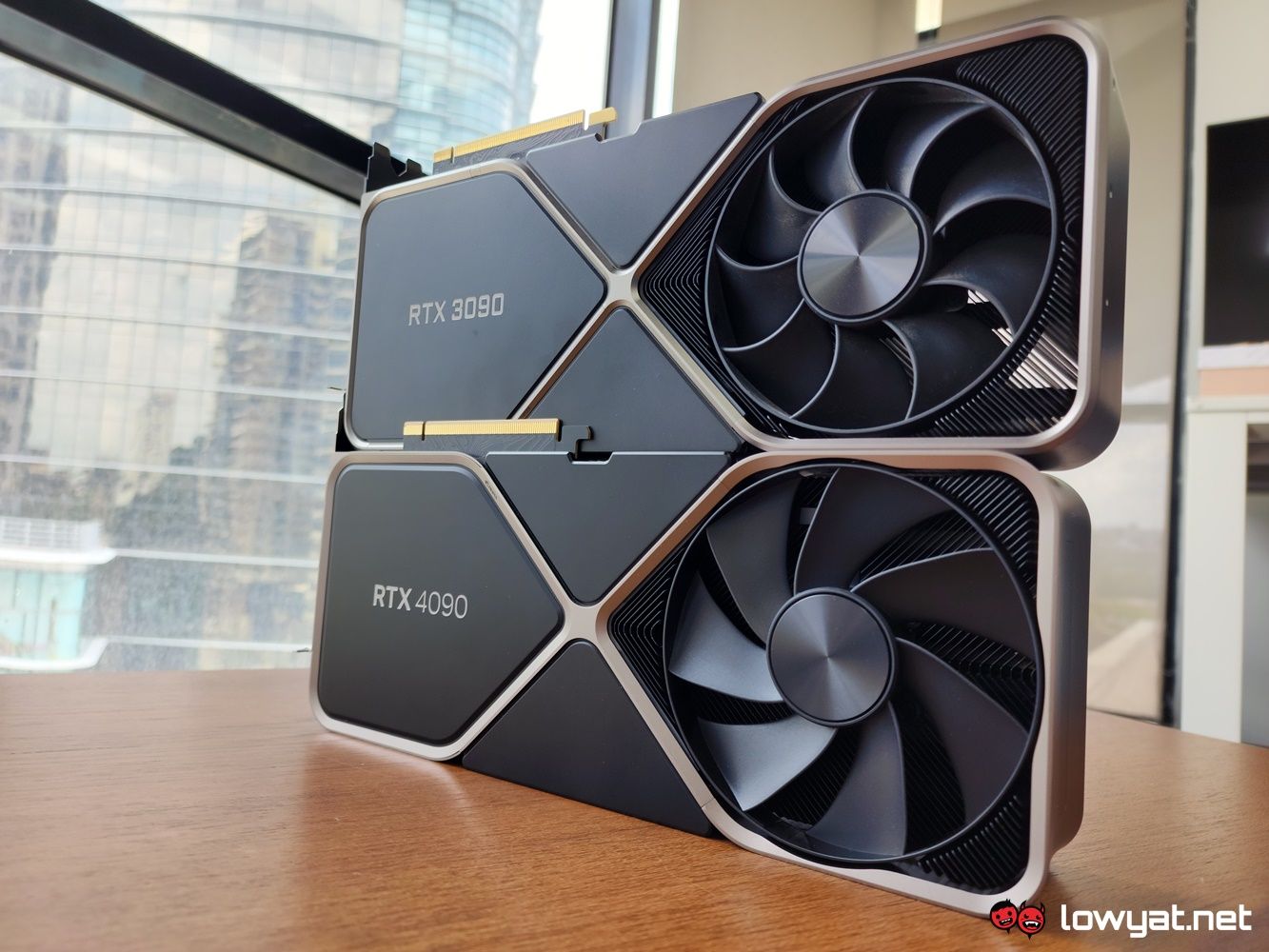
There’s also the integration of AV1 support and, above all else, DLSS 3.0 support with the RTX 4090. At this point in time, the number of games that are capable of running the latter feature are still limited but thanks to NVIDIA, there is one title I can include, and that title is Cyberpunk 2077. Again, this is something you’ll see in the benchmarks section.
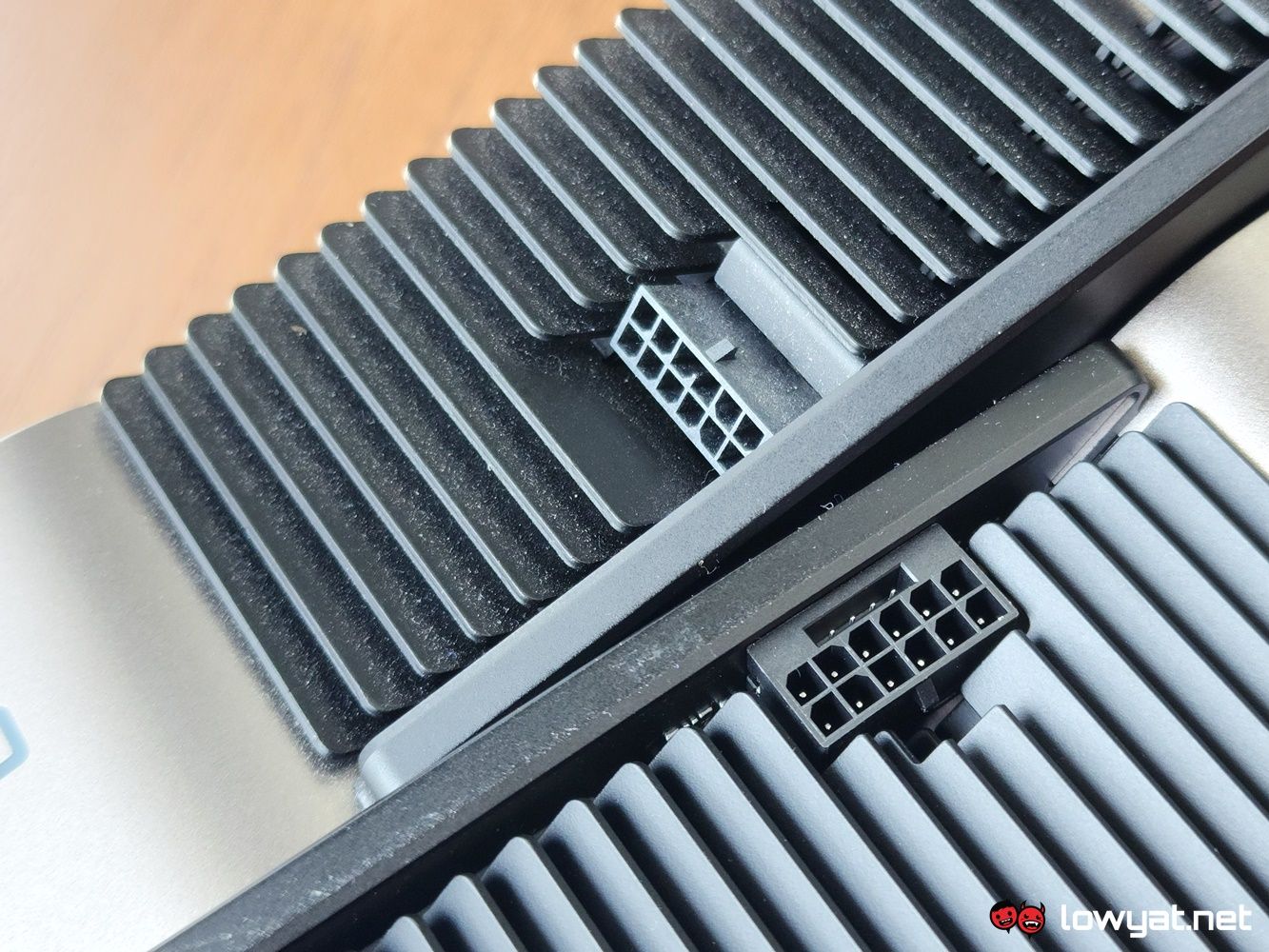

At the rear, the RTX 4090 sports the same number of output ports as before, which include one HDMI 2.1 port and three DisplayPort 1.4 ports. The latter is, in my opinion, a missed opportunity on NVIDIA’s part, given that this could have been its chance to ship the card out with the more advanced DisplayPort 2.0 technology, but the brand’s official statement on the matter is that the current DisplayPort standard already supports 8K at 60Hz as it stands, there’s still time before DP 2.0 becomes more commonplace.
Last but not least, the RTX 4090 is also the first GeForce graphics card to sport NVIDIA’s new 16-pin microFit Molex PCIe power connector, with the ability to channel up to 600W of power through it. Mind you, the card does come with a splitter cable, but unlike the one that came with the RTX 30 Series Founders Edition cards, this one requires four PCIe connectors to run the card.
Testbench
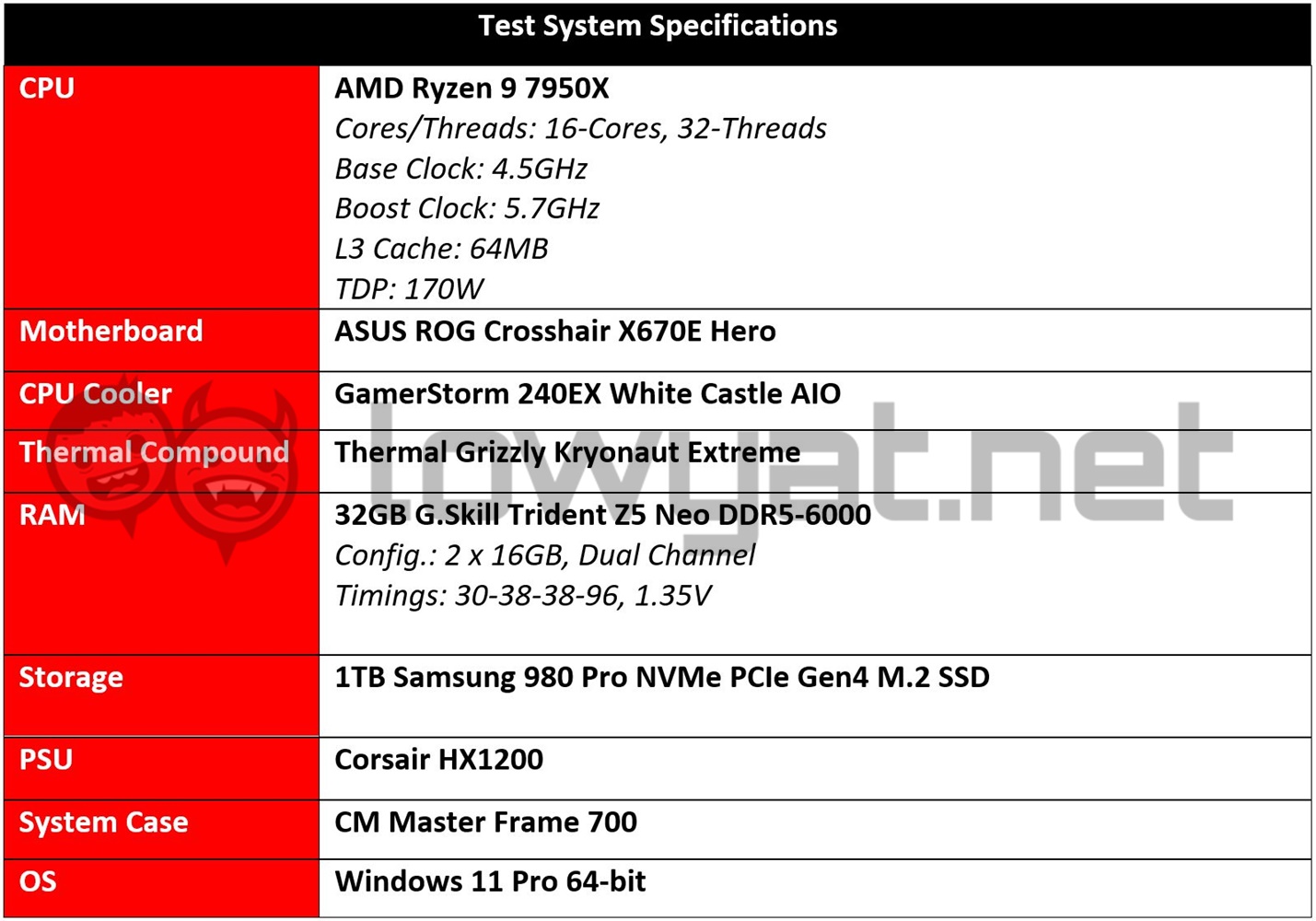 To test out NVIDIA’s powerhouse of a card that is the RTX 4090 and in keeping with the times, I have updated the testbench with AMD’s Ryzen 7000 Series system, and more specifically, the Ryzen 9 7950X that I had reviewed last month. To that end, I also had a chance to retest the RTX 3090 FE with the CPU, but to be fair, the gains between the 5950X and 7950X aren’t grounbreaking, especially in the synthetic benchmarks.
To test out NVIDIA’s powerhouse of a card that is the RTX 4090 and in keeping with the times, I have updated the testbench with AMD’s Ryzen 7000 Series system, and more specifically, the Ryzen 9 7950X that I had reviewed last month. To that end, I also had a chance to retest the RTX 3090 FE with the CPU, but to be fair, the gains between the 5950X and 7950X aren’t grounbreaking, especially in the synthetic benchmarks.
For that matter, I have also included the performance metrics of the Gigabyte RTX 3090 Ti, but its performance metrics listed here were obtained with the 5950X, for the simple reason that the card had already been returned to Gigabyte.
On that note, I won’t be overclocking the RTX 4090 and will simply be running the card as is, out of the box.
Benchmarks
So, getting into the performance of the RTX 4090 FE, the simple fact of the matter is: the gains produced and obtained by this card are breathtakingly exponential. NVIDIA said that the card would be between two to four time faster and more powerful than its predecessors, and it kept its word. Honestly, this is the first time I’ve seen a card blow past the 50000 mark on UL’s 3DMark Fire Strike test, and that’s just out of the box.
From synthetic benchmarks to the real-world gaming applications, the RTX 4090 absolutely, utterly, and completely dominates across the board. At 4K resolution, the card is virtually owning RTX-capable titles like Control and Cyberpunk 2077, with more than double the average framerate. With the latter title, I am running the game between 76 and 89 fps, and that’s with RTX set to Psycho and DLSS 2.0.
That brings me on to a side, yet equally important note about DLSS 3.0. With the new version of this AI super sampling technology, the framerate from the RTX 4090 in Cyberpunk 2077 makes a sizable jump, comfortably maintaining its composure at a new average of 110 fps.
Temperature and Power Consumption
But perhaps one of the biggest improvements NVIDIA is presenting with the RTX 4090 and, in relation to Lovelace, is its performance-per-watt (PPW). Despite having a TDP of 450W, none of the AAA titles I used in my benchmark ever forced the card to pull that amount from the wall. At most I was looking at an average peak draw of 385W.
Even more impressive than the RTX 4090’s PPW, though, is its temperature management. Despite all that power, NVIDIA still managed to ensure that the card’s peak temperature doesn’t break past the 70°C ceiling. Sure, it’s a bit higher than the RTX 3090 FE at 65°C and my lab is kept at a cool 20°C, but here’s the bigger picture: this is a card that is producing more than double the performance, and all it’s asking is for a little more leeway in the heat department.
Conclusion
Like the RTX 30 Series, the NVIDIA GeForce RTX 4090 FE isn’t just a yearly upgrade, designed to satiate the masses: it is, in every essence of the term, a generational upgrade.
Confessedly, I had thought that Lovelace was simply just going to be nothing more than an architecture with some modest improvements. Clearly, NVIDIA has proven me wrong with the RTX 4090 and in turn, has given me a taste of things to come.
But, as these things usually go, it is the RTX 4090’s starting price of RM8400 that may be a, if not the ultimate turnoff and deterrent for consumers looking to get into building their first Lovelace-powered system. That being said, if you’re one of the lucky few with deep pocket, then I will simply say this: If you’re looking for pure absolute power, it doesn’t get any better than this. At least, until NVIDIA’s next flagship comes along.
Follow us on Instagram, Facebook, Twitter or Telegram for more updates and breaking news.


